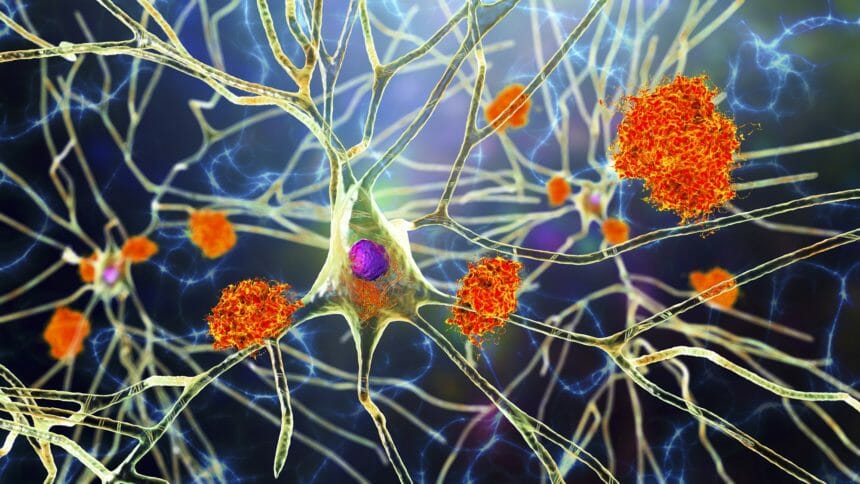
Simply having higher amounts of amyloid protein in the brain is not necessarily a sign of Alzheimer’s disease, the results of a new study suggest. In fact, some forms of this protein may only signal aging while others may indicate dementia, the researchers reported. The findings may be especially relevant at a time when clinicians are making decisions about prescribing new amyloid-targeting drugs.
The buildup of amyloid proteins in the brain have long been associated with Alzheimer’s disease. But how the protein relates to normal brain aging is not fully understood, according to senior author Caleb Finch, PhD, of the University of Southern California.
Finch and colleagues analyzed tissue samples from healthy brains and those of patients with dementia. They found that the brains of cognitively healthy people showed similar amounts of dissolvable, non-fibrillar amyloid protein associated with Alzheimer’s disease as do those of people diagnosed with Alzheimer’s. But the brains of patients with Alzheimer’s had higher amounts of insoluble Amyloid-β (Aβ) fibrils.
A biomarker for Alzheimer’s?
The increase in soluble Aβ may be a general aging-related change in the brain not specific to Alzheimer’s, they noted. But insoluble Amyloid-β (Aβ) fibrils may be a biomarker for Alzheimer’s, and could be used to make decisions about Alzheimer’s treatments, said the study’s first author Max Thorwald, PhD, also of USC.
The findings underscore the care that must be taken when considering the use of newly approved monoclonal antibody treatments, such as Eisai’s Leqembi (lecanemab) to reduce amyloid plaques, the researchers added. The Food and Drug Administration approved lecanemab for early-stage disease earlier this month.
Lecanemab concerns
“Lecanemab clearly works to diminish fibrillar amyloid,” Finch said. “However, we are concerned with major side effects, including brain swelling and bleeding, that were 100% more than in controls, with unknown delayed or latent impact.”
Future studies, including those on drugs that target amyloid, should incorporate brain imaging in both healthy individuals and Alzheimer’s patients across a wide age range to see the effects of amyloid changes over time, Thorwald said.
Full findings were published in the journal Alzheimer’s & Dementia.
Related articles:
FDA approves new drug Leqembi to treat early Alzheimer’s disease
Alzheimer’s drug lecanemab has ‘moderate’ effect on cognitive decline, new trial data show



